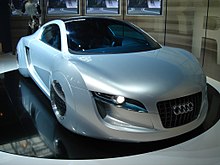CrazyEngineers Forum - Mechanical & Civil Engineering |
| Posted: 31 Jul 2011 10:57 AM PDT [h=1]Future car technologies[/h]From Wikipedia, the free encyclopedia

Potential future car technologies include new energy sources and materials, which are being developed in order to make automobiles more sustainable, safer, more energy efficient, or less polluting. Cars are being developed in many different ways. With rising gas prices, the future of cars is leaning towards fuel efficiency, energy-savers, hybrid vehicles, battery electric vehicles and fuel-cell vehicles.
[h=2]Advanced control[/h]
One major problem in developing cleaner, energy efficient automobiles is the source of power to drive the engine. A variety of alternative fuel vehicles have been proposed or sold, including electric cars, hydrogen cars, compressed-air cars and liquid nitrogen cars. In one experiment done to improve the future of cars, a new kind of battery was installed which can be easily removed, and recharged in two different ways. First, by a generator integrated with the IC and second by removing the cassettes so that they can be recharged off-board in the home ( Charters, Watkinson, Wykes, & Simpkin, 2008). [h=2]Energy saver[/h]Conventional automobiles operate at about 15% efficiency. The rest of the energy is lost to engine and drive-train inefficiencies and idling. Therefore, the potential to improve fuel efficiency with advanced technologies is enormous. Various technologies have been developed and utilized to increase the energy efficiency of conventional cars or supplement them, resulting in energy savings.
| |
| Do any 1 know how to design a Power Press Machine pls make me move forward Posted: 31 Jul 2011 02:44 AM PDT If any 1 know then please help me out & describe me the steps how to start it & r there any books on design of Presses then please let me know about it. Ils an fresher engineer wanted to earn more knowledge please help me out. Harshad Panchal |
| You are subscribed to email updates from CrazyEngineers Forum - Mechanical & Automobile Engineering To stop receiving these emails, you may unsubscribe now. | Email delivery powered by Google |
| Google Inc., 20 West Kinzie, Chicago IL USA 60610 | |



No comments:
Post a Comment